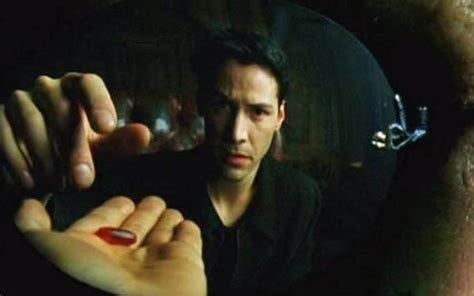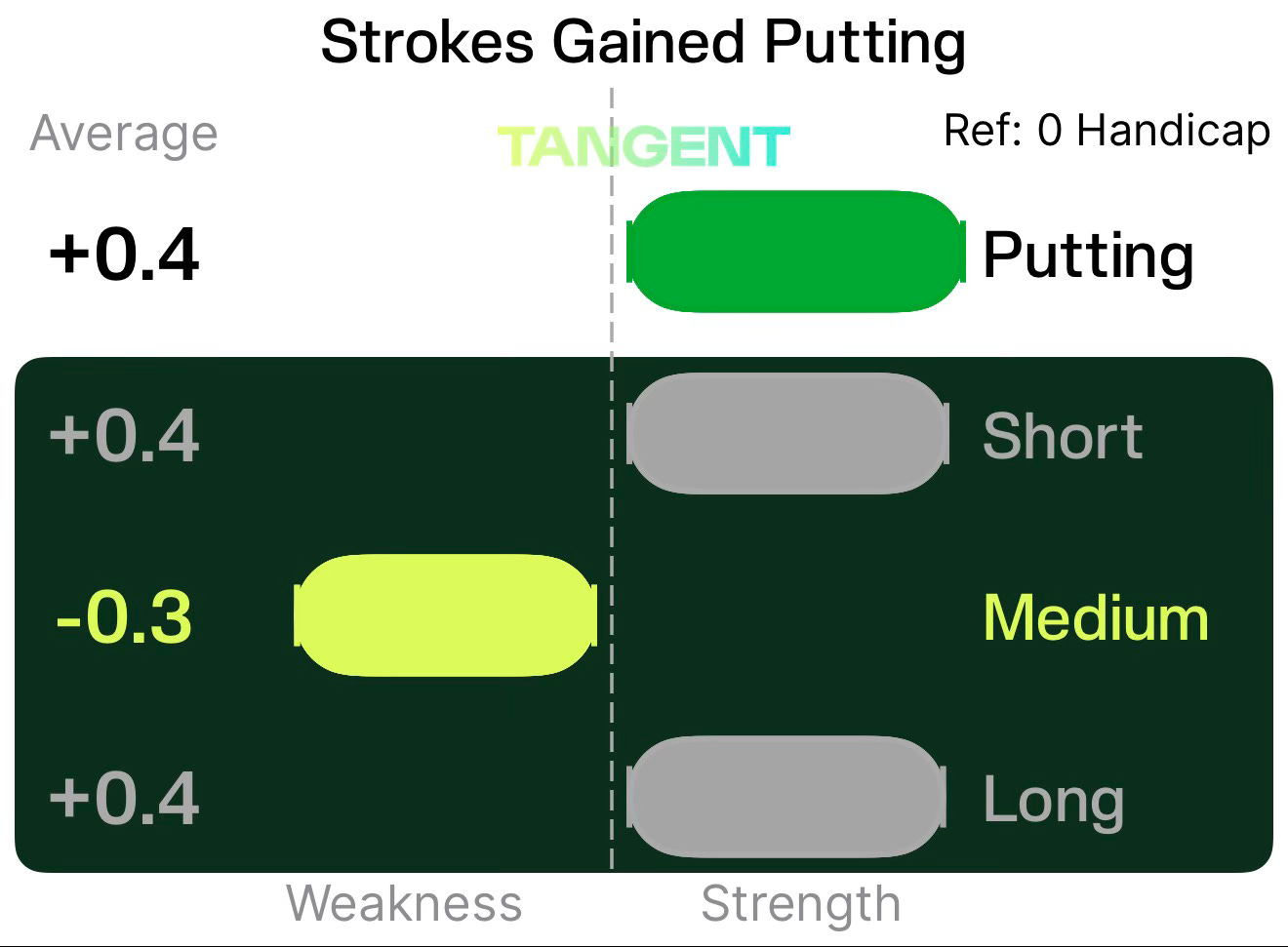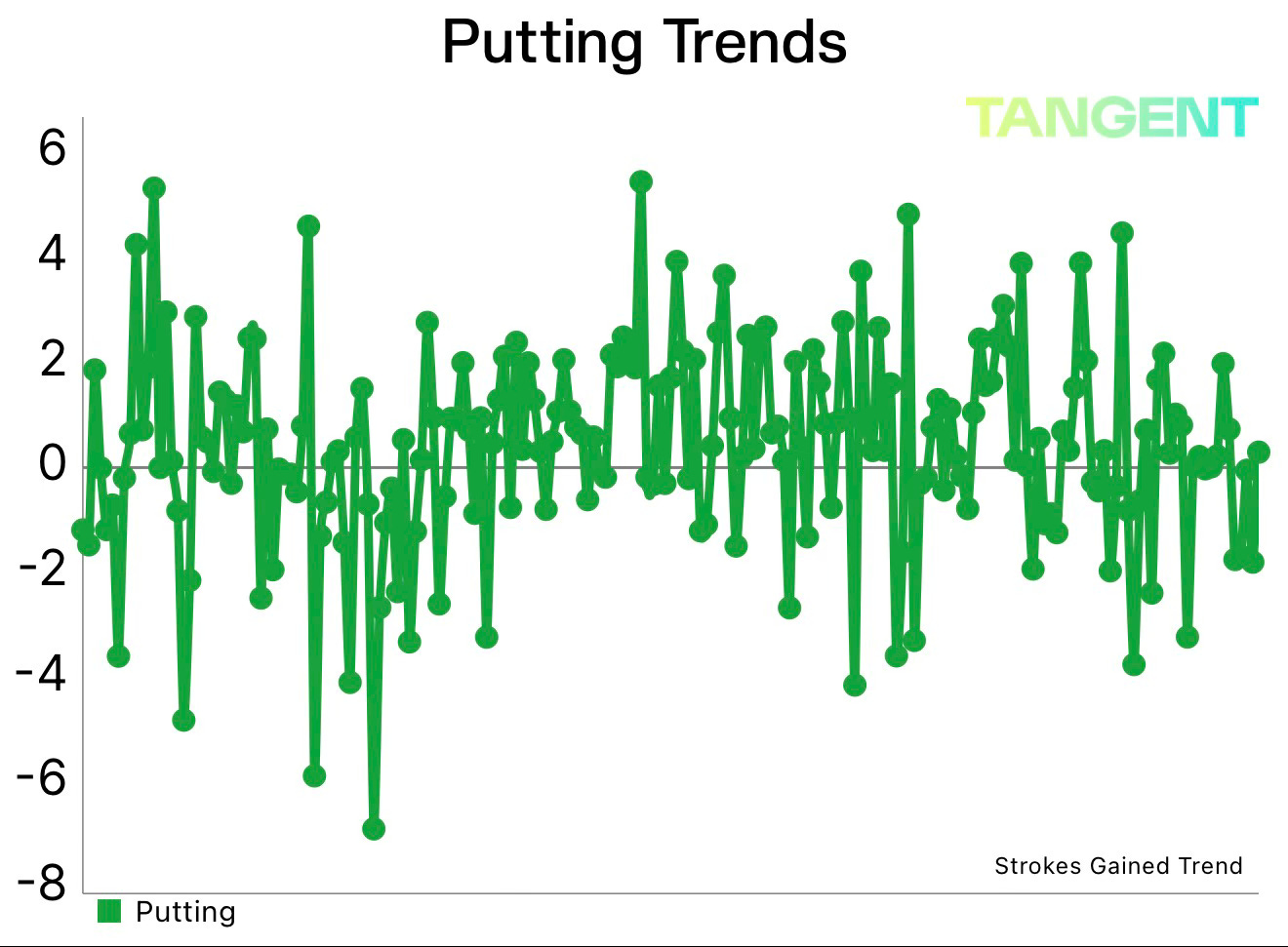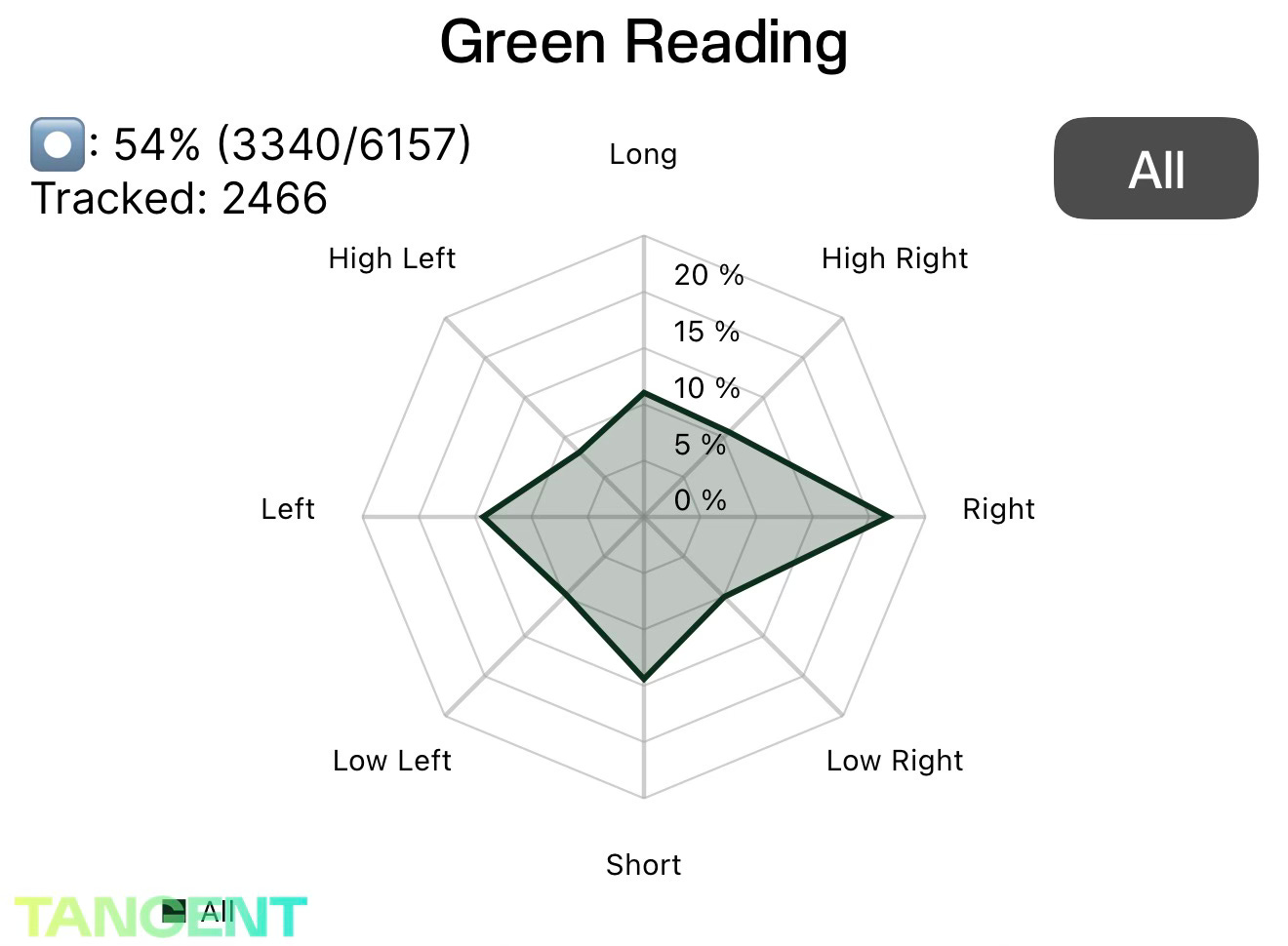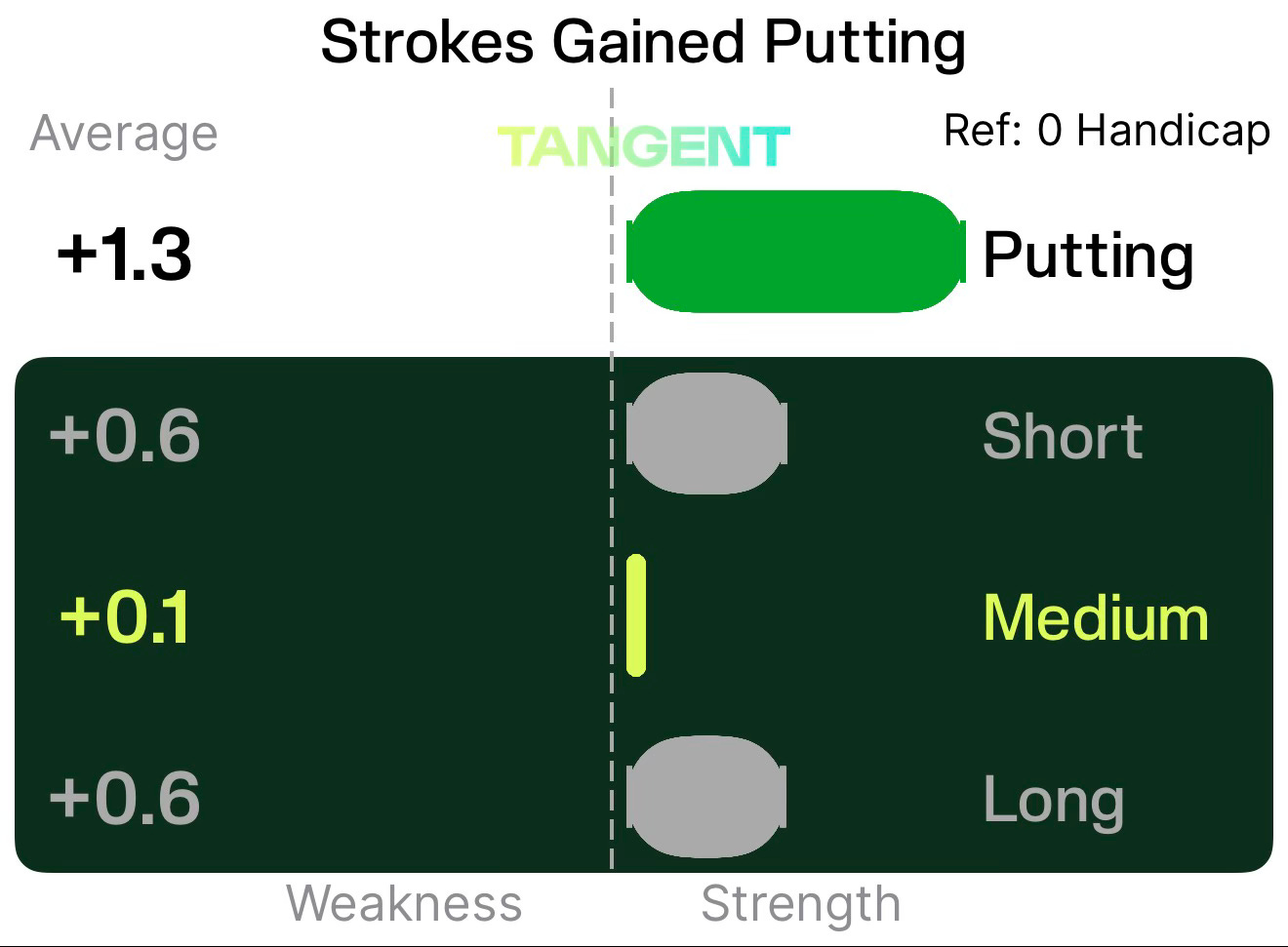Hands up, before I learnt how to do it, I was a massive AimPoint sceptic. I used to sit in front of the TV shouting at players for trampling over the green and doing silly things with their fingers. What do you mean, “feel the break with your feet”? What’s maths got to do with the art of putting? I love golf as much as anyone, but when it came to AimPoint, I was in the Meatloaf camp. I would do anything for golf, but I wouldn’t do that.
Impact of glasses?
I wear varifocal glasses, and while I find them fine for most things, there’s always been a question mark about golf, especially when it comes to putting. Could my glasses be distorting my visual interpretation of break? Tony Wright of Game Improvement Golf (link) suggested that I experiment with single-vision lenses. In addition to not being able to see my scorecard to mark the score (which may be a good thing), I struggled with depth perception. Rather amusingly, I couldn’t get a tee into the ground straight enough to put the ball on top!
Other than going for laser eye surgery, I’m stuck with my varifocals, so could AimPoint be the answer to taking my eyes out of the read?
The time had come?
My friend Colin Shellard had been telling me for ages to try AimPoint, and I wasn’t for listening. Gradually, as I started to see more and more players I respected using AimPoint, I finally thought, “Maybe there’s something in this after all.” I knew my friend (and Tartan Tour Pro) Freddie Lawrence used AimPoint, so I went to see him, took the red pill, and down the rabbit hole I went.
After the introduction from Freddie, I had a lesson with Fintan Bonnar, Scotland’s most qualified AimPoint instructor. Then it was time to practice. This coincided with an enforced layoff from the full game due to a back issue, so I had plenty of time to practice putting and short game. My previous post HERE discusses the lesson and the principles of AimPoint, and this post provides an update on my progress.
Pre-AimPoint
Despite my belief otherwise, I have always actually been a decent putter as demonstrated by the Tangent data below.
This data comes from approximately 200 rounds recorded in Tangent until the end of May 2025, when I had my first introduction from Freddie. The statistics are relative to a zero handicap player, as that is one of my golfing targets. In putting, I’m already achieving my goal. Delving further into the data reveals that my greatest area for improvement is medium-length putts. The green reading graph also shows that my problem appeared to be a combination of poor green reading and poor pace.
I’ve always been a traditional green reader. Look around the green as I walk up the fairway, stand behind the ball, then behind the hole, look for the high point, visualise the roll, pick the start line and go. With long putts, I’ve always hit with freedom as I never expect to hole them, focusing instead on pace and proximity. But with short and especially medium putts, I would often find myself second-guessing my line when I addressed the ball. That’s not a good place to be, leading to an uncommitted stroke and poor pace control. My long-term chart highlights considerable volatility in my putting performance, which is likely the aspect that most undermines my confidence and leads me to describe myself as a “streaky putter”.
Post-AimPoint
I’ve got 41 rounds recorded since my first lesson, and the difference is remarkable. The data speaks for itself.
The latter half of the data was with the SeeMore Mini Giant FGP putter, which recently replaced my Toulon Atlanta. You can read that review HERE. Despite its previous success, the amount of offset on the Atlanta putter no longer suits my eye. I am even considering selling it!
All aspects of my putting have improved, but the most marked improvement has been with medium-length putts. I still have a dominant miss to the right, but I am getting the ball to, and beyond, the hole more frequently than I used to. I think this is a combination of AimPoint giving me more confidence in my line and the new putter giving me more confidence in my start line and pace. However, it’s important to remember the data from Mark Brodie when evaluating these medium-range putts. There’s a greater chance of missing than of making from 8ft and longer! I believe that expectation management is a big part of confident putting.
Lots of practice
As mentioned above, learning AimPoint coincided with my back injury, which meant I was unable to make full swings for several weeks this summer. Rather than wallowing in self-pity, I used that time to review multiple putters and practice my short game. I spent hours at The Duke’s honing my AimPoint feel and hitting hundreds of putts. Repetition has built confidence in the process.
The putter reviews also led me to change from my Toulon Atlanta to the SeeMore Mini Giant FGP. I am very happy with that change, and it is now the benchmark putter for future reviews. The testing protocol brought structure and discipline to my putting practice. Again, repetition and seeing lots of putts drop have built confidence in my aim and stroke, which is evident in my stats.
Final thoughts
Regular playing partners have commented that my demeanour on the greens has changed, I “look” more confident, and I’m stroking my putts better. I trust my process now and believe the feeling through my feet more than the tricks played by my eyes. With AimPoint, I no longer question my start line and just focus on pace. I’m never going to hole every putt (or Brodie would have to rewrite his stats), but I’m certainly giving more of them a chance.
The key now will be continuing to dedicate time to practising my putting. There is no doubt that this has built my confidence in the AimPoint process. Watching lots of putts drop is self-reinforcing, embedding the belief that “I am a good putter”. Making the most of my injury by learning AimPoint and dedicating time to practice has definitely helped me discover new freedom and confidence on the greens.
It could help you too!




